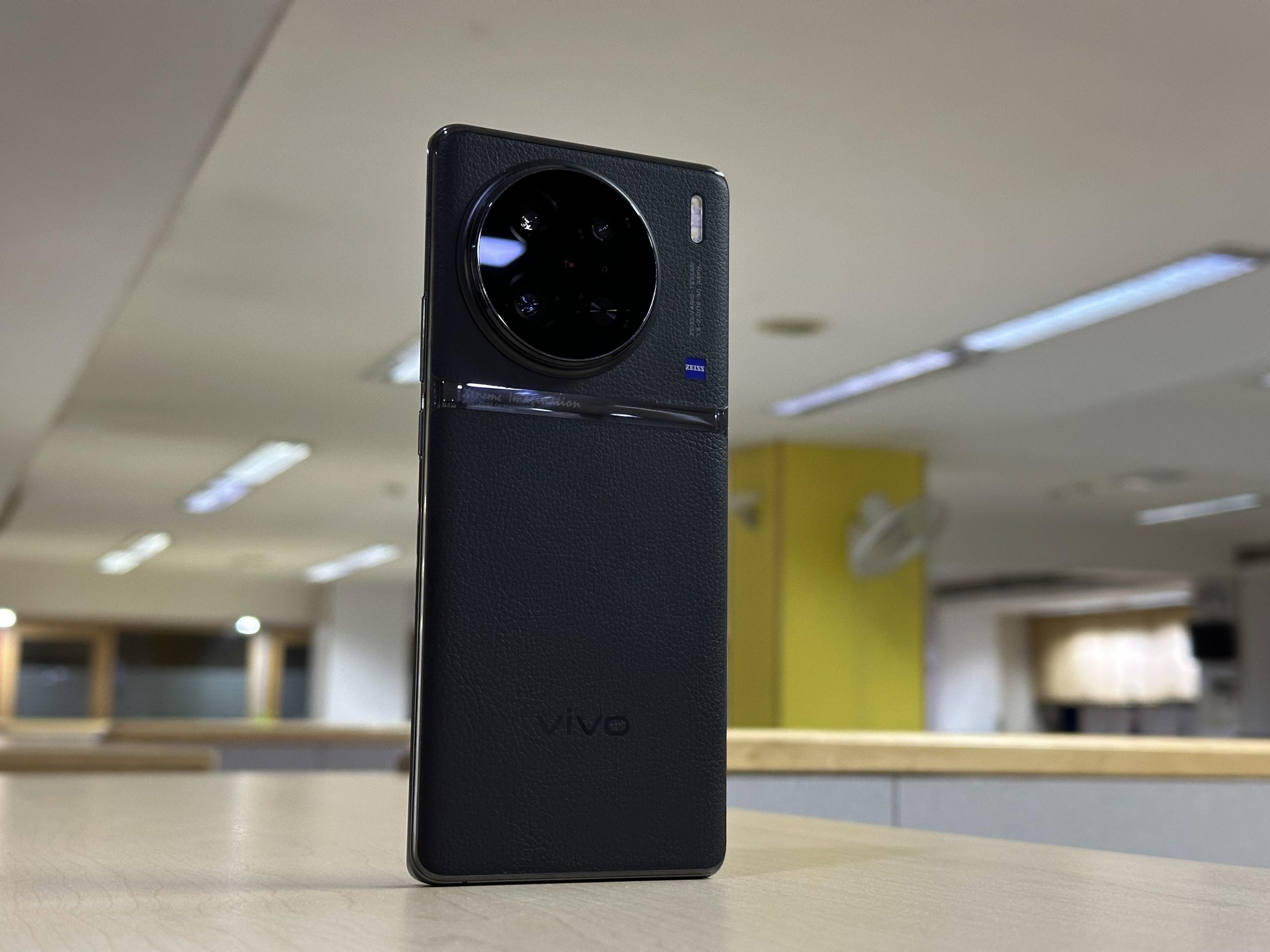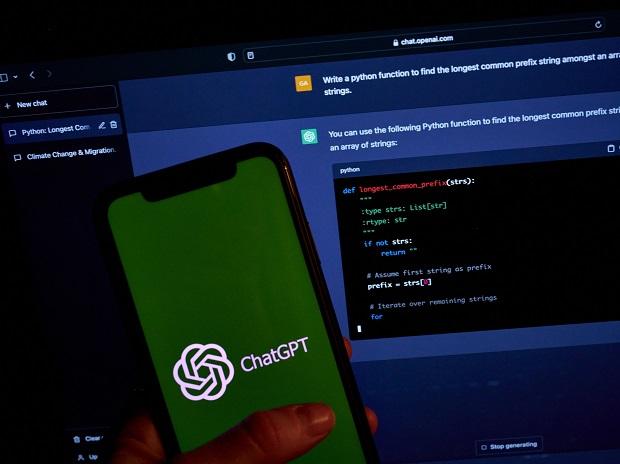Chinese brand Vivo has come a long way adding fineness to the imaging experience on its smartphones. Its latest in the premium line, the Vivo X90 Pro, boasts an imaging system that the company co-engineered with lens experts at Zeiss. Announced in China in 2022, the smartphone arrived in India recently. Despite the delay in the India launch, the Vivo X90 Pro does not seem to be trailing behind other 2023 premium flagship smartphones launched in the country to date because the novel imaging experience offered by the smartphone is backed by top-notch performance. But, there are gaps in the package. Let’s dig in the details to understand:
Design
The Vivo X90 Pro is a camera-focused premium smartphone and it is apparent in the design, especially the rear profile. Covered in black vegan leather, the phone’s back side has a massive circular-camera island dominating the top side. It bulges from the body but in no way hampers the in-hand experience, even in horizontal orientation. Speaking of the experience, the Vivo X90 Pro is neither the thinnest nor the most compact or lightweight smartphone. But it is well built with weight evenly distributed for a comfortable in-hand experience. Rounding off the otherwise neatly designed smartphone is the IP68 rating for water and dust resistance.
Display and audio
The Vivo X90 Pro sports a 6.78-inch fullHD+ (2800 × 1260) display of 120Hz refresh rate. The display is good with regard to colours, contrast, and dynamic range. But it is not of flagship grade – it is not as sharp as QHD+ displays seen on most other smartphones in the premium segment. Besides, the display has text scaling issues. There is a setting in the display to adjust font and display size, but it does little to fix the scaling issues – especially in third-party apps. For example, the font size remains small in the quick setting menu even if it is set to extra-large.
Nevertheless, the display is good for multimedia content. It is a 10-bit display with support for HDR10+. For SDR content, there is a built-in visual enhancement setting that optimises colours and contrast. The list of supported apps is limited, but covers commonly used ones such as Netflix and YouTube. It works, but do not expect true HDR-like quality since it is a pure software play.
Coming to the audio, the Vivo X90 Pro impresses with loudness and clarity. However, there is a stereo imbalance with crosstalk apparent between the right and left channels. The speakers deliver a wide soundstage, but the lack of Dolby Atmos or similar multi-dimensional audio enabling technology leaves one asking for more.
Imaging
The Vivo X90 Pro sports a 1-inch type 50-megapixel primary camera sensor on the back, paired with a 50MP telephoto sensor, and a 12MP ultra-wide-angle sensor. On the front, there is a 32MP sensor. The primary and telephoto sensors are backed by optical image stabilisation, and the ultra-wide-angle sensor supports autofocus that enables macro shots from up to 4cm close range.
Details aside, the Vivo X90 Pro has a versatile imaging system loaded with useful value-added features from both Zeiss and Vivo for novel experience. In regular everyday use, the cameras impress with details, dynamic range, and colours. In default settings, the primary camera captures vivid colours without compromising on details and dynamic range. This large pixel-rich camera sensor is capable of creating natural shallow depth-of-field and it does so even on the non-living objects.
The colours look a bit washed out in the images shot with the ultra-wide-angle sensor, but the sensor is good with details and dynamic range. The telephoto sensor picks noise and is not as refined as the primary and ultra-wide-angle sensor, but it is good with regard to colours. That said, all three sensors here have independent utility and they work well irrespective of lighting conditions.
Adding zing to the experience is the value-added features such as Zeiss natural colour, which brings symmetry in colours and makes the shots look close to natural. Likewise, there are different Zeiss styles available in portrait mode for creative bokeh effects. These are not image filters, but styles that Vivo implemented in partnership with Zeiss.
Coming to the front camera, the Vivo X90 Pro has a 32MP sensor of an f/2.45 aperture. Like the rear cameras, the front camera gets a fair number of value-added features. It supports low-light portraits, beauty mode, portrait with depth control, and Zeiss styles.
As for the videos, the Vivo X90 Pro goes all the way up to 8K at 24fps from the primary camera. The other two camera sensors on the back peak at 4K at 30fps, and the front camera is limited to 1080p at 60fps. Zeiss partnership is visible in the video section too with cinematic style available across cameras. However, cinematic style video recording is available only at 1080p at 30fps. Besides Zeiss-engineered cinematic mode, there are movie LUTs and filters to add zing to the videos. These enable so many options for the users to explore and experiment with.
Performance
Powered by MediaTek Dimensity 9200 system-on-chip, paired with 12GB RAM and 256GB on-board storage, the Vivo X90 Pro feels snappy and does not lag even after extended use. It starts to warm up after a point, but keeps the thermals well within range for comfortable use. The phone handles routine tasks with ease and shows no restraint while handling power- and- graphic-intensive workloads such as gaming, multimedia editing, and 4K video recording and streaming. While performance is top-notch, the Vivo’s FunTouch interface (based on Android 13) is not well optimised to deliver the matching experience. As noted above, there are text scaling issues. Besides, there is bloatware and the settings menu seems jumbled – making it hard to find relevant settings without using search.
Battery
The Vivo X90 Pro is powered by a 4870 mAh battery, which is well optimised to deliver a day’s on-battery time on a full charge. The on-battery time based on usage may be modest, but the battery impresses with the stand-by time. Charging with the 120W fast charger (in-box accessory) is another impressive feat.
Verdict
The Vivo X90 Pro is an admirable camera-centric smartphone but not an all-round premium smartphone. It delivers on core features such as design and imaging, but leaves one asking for more in terms of experience due to underwhelming display and unoptimised and bloatware-loaded interface. At Rs 84,999, the phone sits next to the Xiaomi 13 Pro, which is not just cheaper but a better value proposition with strengths across parameters.
Note:- (Not all news on the site expresses the point of view of the site, but we transmit this news automatically and translate it through programmatic technology on the site and not from a human editor. The content is auto-generated from a syndicated feed.))



